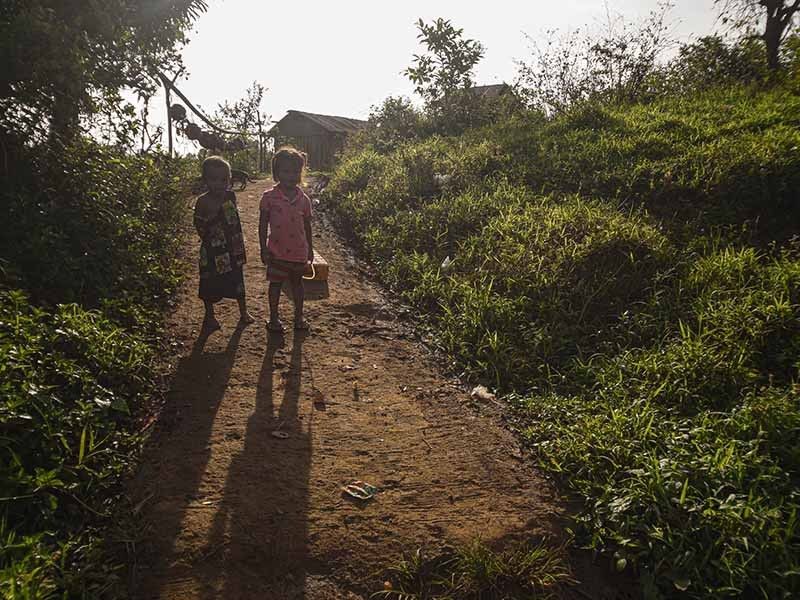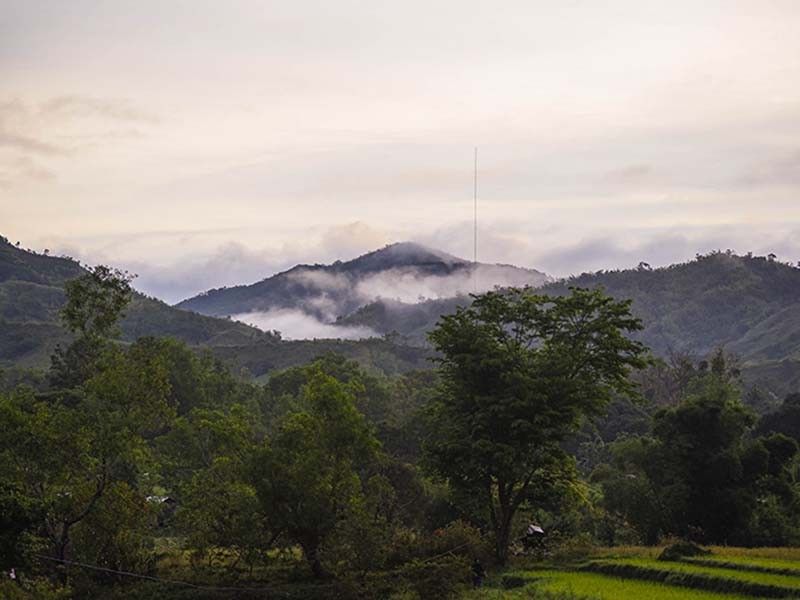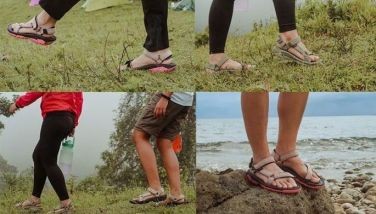Antipolo Dumagats hope new 31,000-tree reforestation project takes root

MANILA, Philippines — Ernesto Dorroteo, chieftain of a Dumagat-Remontado community that has settled in the remote sitio of San Ysiro in Antipolo, Rizal, witnessed how surrounding forests were destroyed by logging in the '80s and '90s.
"I was so sad to see the illegal logging. So many big trees disappeared so quickly," Dorroteo told Philstar.com in Filpino during a visit to the community. "That kind of logging is such a waste."
Claiming parts of Sierra Madre as their ancestral domain since before colonization of the Philippines, the nomadic Dumagat-Remontados also have rights over the comprising lands, inland bodies of water, and of course, natural resources, which include the forests.
Dorroteo decided to settle in Purok Libis of Sitio San Ysiro so that he can send his children to school. It was around this time that he witnessed the large-scale logging before Republic Act 8371 was passed.
The Indigenous Peoples’ Rights Act of 1997 recognizes the rights of IP communities over their ancestral domains or lands, and more importantly, identifies their rights for the government’s promotion and protection.
Dorroteo, not a chieftain yet at the time, didn’t know how to report the illegal logging activities.
"There was nobody to report it to. We saw the soldiers with the illegal loggers, so who could we turn to?" he said, recalling large-scale logging decades ago.
Three decades and two reforestation efforts later, Sitio San Ysiro’s forests may see a greener future for new generations of Dumagat-Remontados.
This year, the community has sealed a partnership with Haribon Foundation to reforest 50 hectares of forests with over 31,000 trees.
Waiting for the green light
According to Haribon, the partnership with Sitio San Ysiro is part of a five-year reforestation project covering 100 hectares of the Upper Marikina River Basin Protected Landscape (UMRBPL).
A large portion of this Protected Area was declared Ancestral Domain of the Dumagat-Remontado of Antipolo in 2017.
Talks with the community began in July 2019, when the Pinagsama-samang Grupong Magbubukid sa Casunugan (PINGRUMAC) sent a formal request letter to Haribon, followed by a Protected Area Management Board (PAMB) meeting that was also attended by representatives of the Department of Environment and Natural Resources and UMRBPL.
As PAMB member for the protected upper Marikina watershed, Dorroteo was one of the representatives of the Dumagat-Remontado of Antipolo.
The next step will be a Memorandum of Agreement among the DENR, PINGRUMAC, the local governments of Antipolo City and Barangay San Jose and the National Commission on Indigenous Peoples (NCIP) to restore 100 hectares of denuded forests in the Upper Marikina watershed over the next five years.
"As of now, this partnership is yet to be implemented since the MOA is not yet signed. Though the PAMB of DENR has already approved our forest restoration project in the area, however, the NCIP’s validation process is yet to be conducted," forester Thaddeus Martinez, head of Natural Resources Management Division-Site Action Department at Haribon, said.
As a Community Initiated Project, the NCIP requires an endorsement with 100 signatures of members of the Indigenous Political Structure/System — the councils and other bodies within the community.
This was initially prepared, including signatures of their elders and chieftains in December 2019, however, the pandemic hit, affecting NCIP’s validation process.
"Recently, in the past few weeks, the Dumagat-Remontado has already re-informed their tribes and was able to collate the 100 signatures of their IPS members, which Haribon is currently awaiting from the Dumagat-Remontado to submit to NCIP and Haribon," Martinez said.
The next step after validation is identifying the specific site for the project and the signing of the MOA. Haribon hopes the reforestation can start by July.

Early morning in Sitio San Ysiro in Antipolo, Rizal on Feb. 13, 2021. Philstar.com/Deejae Dumlao
Learning from experience
As Sitio San Ysiro awaits the formal MOA signing, Dorroteo said that they have already started seedlings of fruit-bearing trees like tamarind, jackfruit, soursop, cacao and coffee. As one hectare would have 625 native tree seedlings, they hope to grow and plant a total of 31,250 seedlings.
"Haribon has its standard process of site-species matching, meaning the project will facilitate the planting of native tree species that are sourced from the remaining patches of forests in the area—particularly from the quality mother trees which the communities are also familiar with," Martinez said.
As their partner, Haribon will also provide the community the livelihood incentives from the production and planting of native seedlings, followed by a three-year maintenance of the planted seedlings.
For Dorroteo, this commitment is important as he does not want to make the mistakes of the past.
He said that in 2012, the National Greening Program of the Department of Environment and Natural Resources also planted native trees in Sitio San Ysiro. This was part of the NGP’s goal to rehabilitate the upper Marikina watershed, which encompasses 26,125-hectare of lands and forests.
Dorroteo, however, lamented that the five-year greening program wasn’t fully accomplished by its implementers.
"The government did not take care of the trees as much. Even when they planted and planted—they planted for nearly five years—nothing happened. After they planted, they didn’t visit the seedlings to check."
On their end, he admitted that his people worked on their personal farms and other sources of livelihood. They needed to earn money to survive so they couldn’t tend to the newly-planted trees.
Apart from the DENR, non-profit organizations like the Foundation for the Philippine Environment, also joined hands with Sitio San Ysiro to plant trees in the area as early as 2010, in the aftermath of Typhoon Ondoy.
Pre-pandemic, volunteer groups such as RAK Ph Mountaineers also frequently visited the community to hold tree-planting activities for hikers. The sitio used to accept visitors to hike surrounding summits as a source of livelihood.
Today, as the San Ysiro community continues to develop—a concrete health center was recently built for the people—Doroteo hopes for the successful rehabilitation and preservation of its forests.
After all, their ways of life remain dependent on the natural resources of the land and mountains.
--
The Dumagat-Remontados of Barangay San Jose, which covers Sitio San Ysiro, officially received their Certification of Ancestral Domain Title from the National Commission on Indigenous Peoples in 2017.
- Latest






























